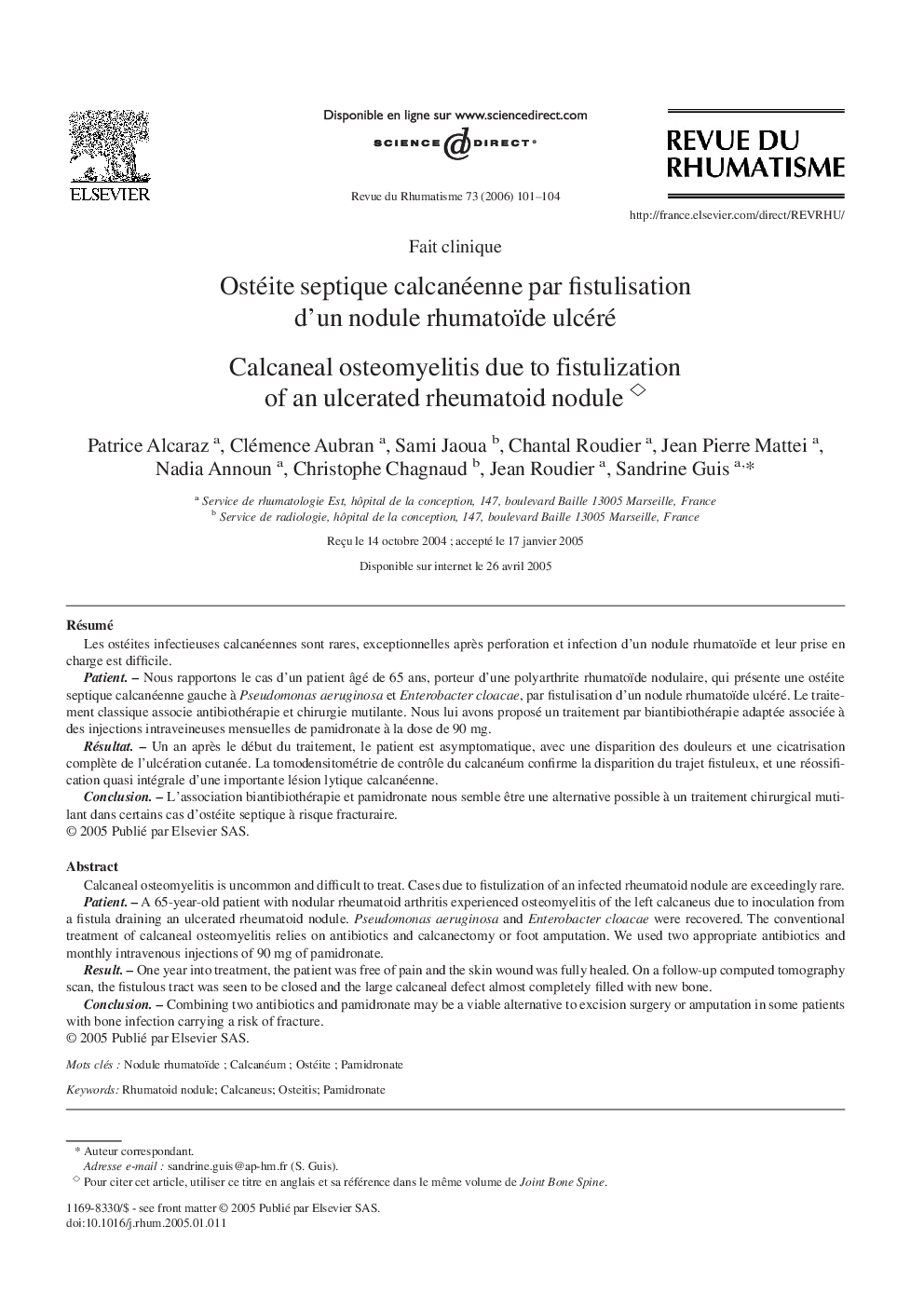| کد مقاله | کد نشریه | سال انتشار | مقاله انگلیسی | نسخه تمام متن |
|---|---|---|---|---|
| 3389678 | 1220811 | 2006 | 4 صفحه PDF | دانلود رایگان |

RésuméLes ostéites infectieuses calcanéennes sont rares, exceptionnelles après perforation et infection d'un nodule rhumatoïde et leur prise en charge est difficile.Patient. – Nous rapportons le cas d'un patient âgé de 65 ans, porteur d'une polyarthrite rhumatoïde nodulaire, qui présente une ostéite septique calcanéenne gauche à Pseudomonas aeruginosa et Enterobacter cloacae, par fistulisation d'un nodule rhumatoïde ulcéré. Le traitement classique associe antibiothérapie et chirurgie mutilante. Nous lui avons proposé un traitement par biantibiothérapie adaptée associée à des injections intraveineuses mensuelles de pamidronate à la dose de 90 mg.Résultat. – Un an après le début du traitement, le patient est asymptomatique, avec une disparition des douleurs et une cicatrisation complète de l'ulcération cutanée. La tomodensitométrie de contrôle du calcanéum confirme la disparition du trajet fistuleux, et une réossification quasi intégrale d'une importante lésion lytique calcanéenne.Conclusion. – L'association biantibiothérapie et pamidronate nous semble être une alternative possible à un traitement chirurgical mutilant dans certains cas d'ostéite septique à risque fracturaire.
Calcaneal osteomyelitis is uncommon and difficult to treat. Cases due to fistulization of an infected rheumatoid nodule are exceedingly rare.Patient. – A 65-year-old patient with nodular rheumatoid arthritis experienced osteomyelitis of the left calcaneus due to inoculation from a fistula draining an ulcerated rheumatoid nodule. Pseudomonas aeruginosa and Enterobacter cloacae were recovered. The conventional treatment of calcaneal osteomyelitis relies on antibiotics and calcanectomy or foot amputation. We used two appropriate antibiotics and monthly intravenous injections of 90 mg of pamidronate.Result. – One year into treatment, the patient was free of pain and the skin wound was fully healed. On a follow-up computed tomography scan, the fistulous tract was seen to be closed and the large calcaneal defect almost completely filled with new bone.Conclusion. – Combining two antibiotics and pamidronate may be a viable alternative to excision surgery or amputation in some patients with bone infection carrying a risk of fracture.
Journal: Revue du Rhumatisme - Volume 73, Issue 1, January 2006, Pages 101–104